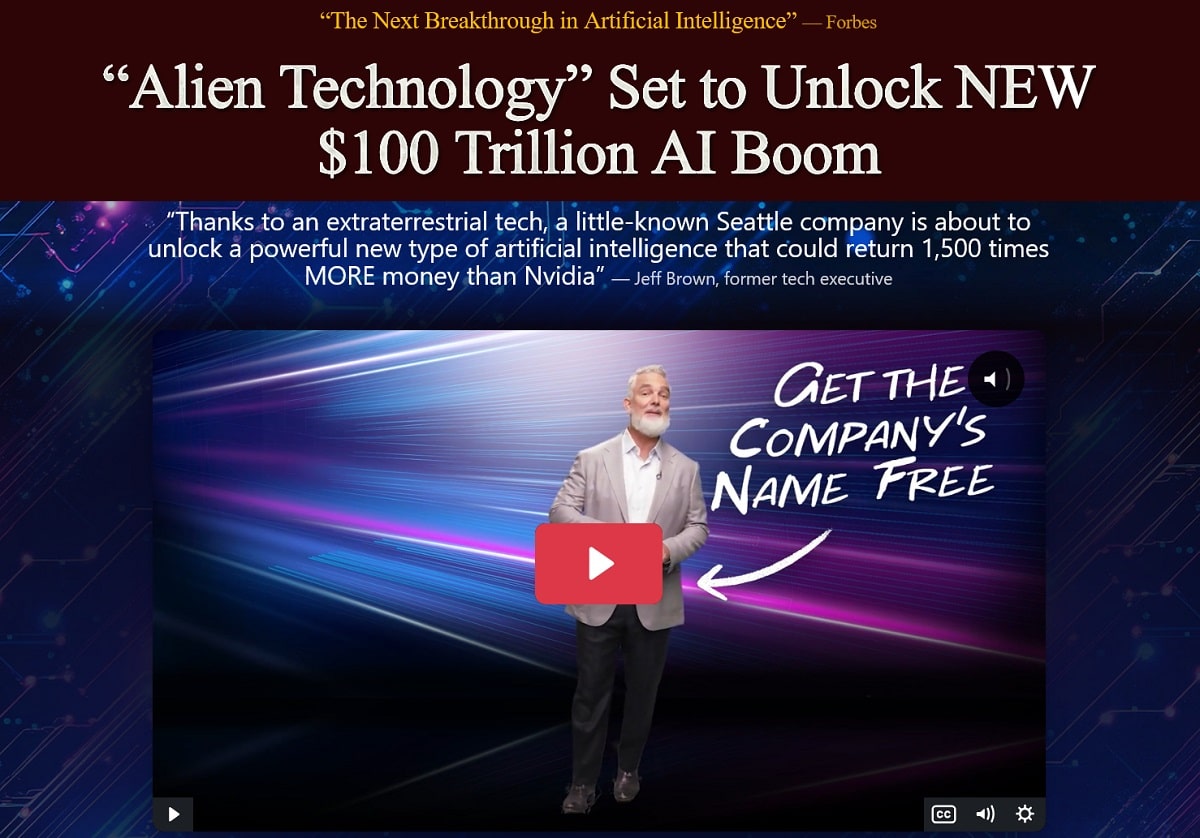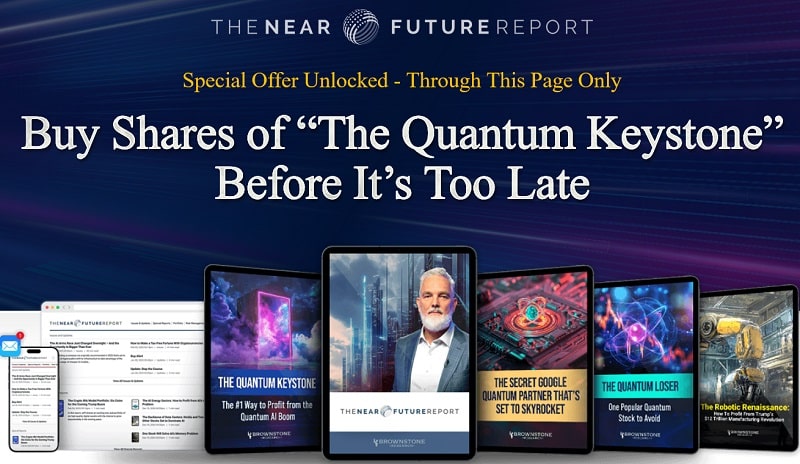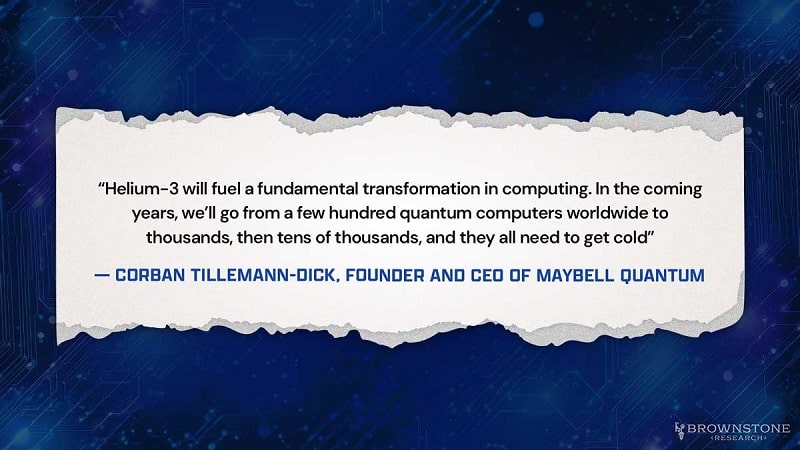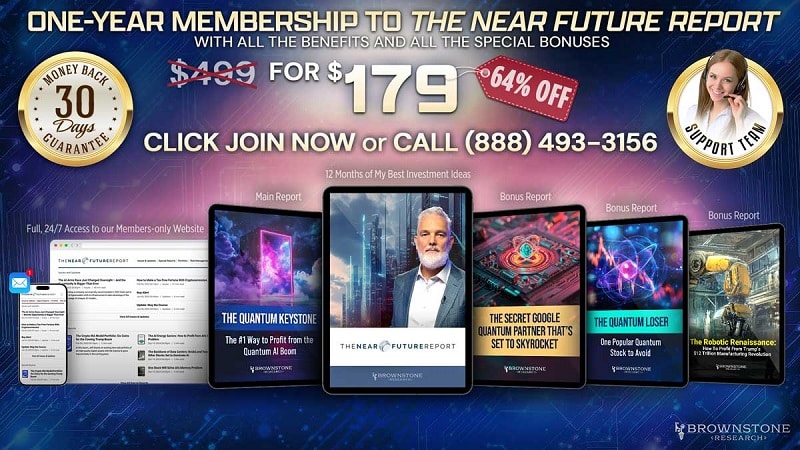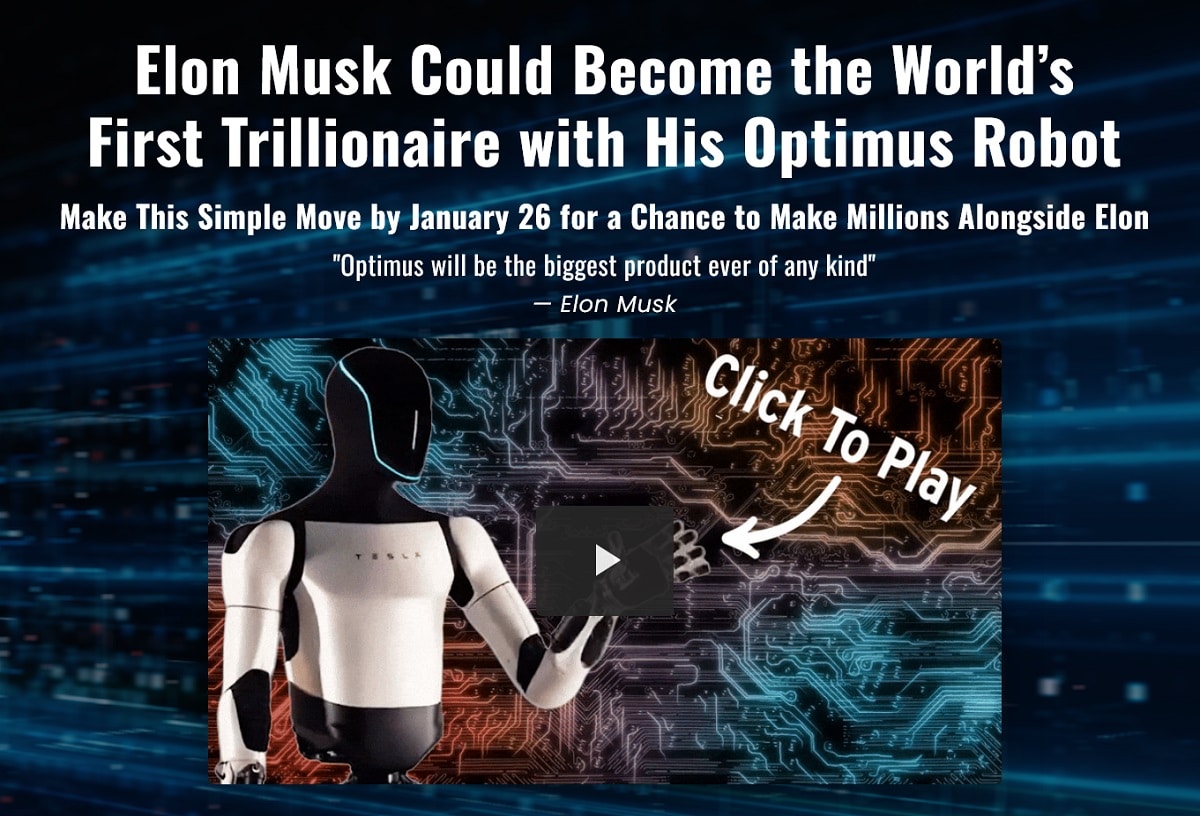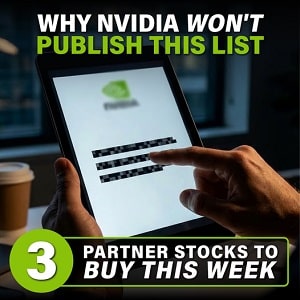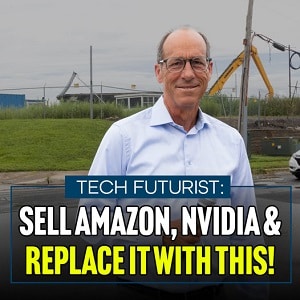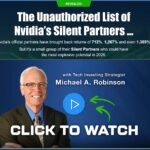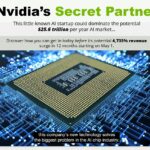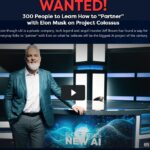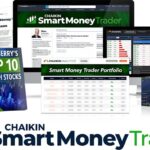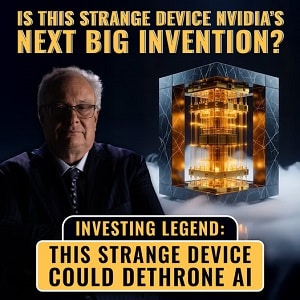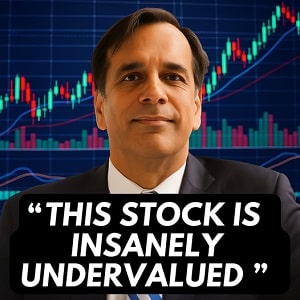Unveil Jeff Brown’s Quantum Keystone stock in the $100 trillion Q-AI boom. Is SpaceX the key to helium-3 mining and quantum AI? Explore if it’s a good investment.
Jeff Brown’s Vision for the Future
Jeff Brown, a former senior executive at tech giants like Qualcomm, NXP Semiconductors, and Juniper Networks, has built a reputation as a visionary in the technology investment space.
With decades of experience advising government agencies and spotting paradigm shifts early, Brown has a track record of predicting major trends. From recommending Bitcoin when it was $240 to picking Nvidia before its 27,000% surge, Brown’s insights have helped investors capitalize on transformative technologies.
What Is Jeff Brown’s “Q-AI” – Quantum Artificial Intelligence?
In his recent presentation, Brown introduces the concept of “Q-AI” – Quantum Artificial Intelligence – a fusion of quantum computing and AI that he believes will trigger a $100 trillion tech revolution.
At the heart of this narrative is an “extraterrestrial substance” called helium-3, sourced from the moon, and a little-known company he dubs the “Quantum Keystone.” This company, according to Brown, is essential for unlocking Q-AI’s potential and could deliver returns surpassing even Nvidia’s impressive run.
But what is this Quantum Keystone stock? After analyzing Brown’s teaser, cross-referencing with his descriptions, and researching the backers and technology, it becomes clear that the company is SpaceX. While SpaceX is not a publicly traded stock in the traditional sense, Brown’s “backdoor” approach likely involves indirect investment methods.
Below we’ll reveal the details, analyze the opportunity, and answer the key question: Is it good?
The Story Behind Q-AI and the Need for Helium-3
To understand the Quantum Keystone, we must first dive into the core of Brown’s thesis. Traditional AI, powered by classical computers like those using Nvidia’s GPUs, has hit a wall. Problems like curing cancer, predicting weather with absolute accuracy, or developing forever-batteries are too complex for binary systems that process data sequentially.
Quantum computing changes that. Using qubits that leverage superposition, quantum computers can perform billions of calculations simultaneously. Brown highlights Google’s Willow chip, which solved a problem in under five minutes that would take a supercomputer a trillion years. When combined with AI, this creates Q-AI – a “god-like” technology capable of solving humanity’s biggest challenges.
However, quantum computers require ultra-cold temperatures near absolute zero (−459°F) to maintain stability and avoid decoherence. The key to achieving this is dilution refrigerators, which rely on helium-3. This rare isotope is scarce on Earth but abundant on the moon, deposited by solar wind over billions of years. NASA estimates 3 million tons could be available, enough to power America for 40,000 years if used for energy, but its primary role here is enabling quantum stability.
Brown points to Interlune, a Seattle-based startup backed by VC firms, the U.S. Department of Energy, NASA, and the National Science Foundation. Interlune has developed a lunar excavator prototype that can process 100 metric tons of regolith per hour to extract helium-3. They have deals with Maybell Quantum for thousands of liters and the DOE for three liters. Interlune’s CEO has stated that their mission is critical for securing helium-3 supply.
But mining the moon is no small feat. It requires affordable, reliable access to space – that’s where the Quantum Keystone comes in.
Revealing the Quantum Keystone Stock: SpaceX
Based on Brown’s clues, the Quantum Keystone is SpaceX, founded by Elon Musk. Here’s why it fits perfectly:
- Revolutionary Space Exploration Technology: Brown describes a technology that makes moon mining economically viable, protected by 179 patents. SpaceX’s reusable rocket system, particularly the Falcon 9 and Starship, has drastically reduced launch costs from $10,000 per pound to under $1,000. The “chopsticks” (Mechazilla) tower for catching boosters is a recent breakthrough, allowing rapid reuse.
- Elon Musk’s Praise: Brown says Elon Musk called this tech “a pivotal breakthrough.” Musk has repeatedly described reusable rockets as the key to making space travel sustainable, calling the first booster landing “a critical step to being able to establish a city on Mars.
- Interlune’s Dependence: Brown notes the Interlune CEO admitted without this company, they couldn’t extract helium-3. Although not explicitly stated in public, startup like Interlune rely on SpaceX’s low-cost launches. Without reusable rockets, the cost of sending equipment to the moon would be prohibitive for a small company. Interlune’s planned missions align with SpaceX’s launch capabilities, and many lunar startups partner with SpaceX.
- Backers Match: The company is backed by Peter Thiel (early SpaceX investor), Marc Andreessen (a16z invested in SpaceX), Sequoia Capital (invested in SpaceX), and Google (invested $1 billion in 2015). Ron Baron has approximately 15% of some Baron Funds invested in SpaceX, close to the “almost 20%” mentioned, and he has publicly stated SpaceX could be as big as Nvidia or larger, with 10x potential.
- Government Support: SpaceX has billions in U.S. government contracts from NASA (e.g., Artemis program, Crew Dragon) and the Department of Defense. This includes lunar lander contracts and Starship development for moon missions.
- National Security Angle: Brown mentions Trump administration support for quantum supremacy against China, who has moon mining ambitions. SpaceX is key to U.S. space dominance, with contracts ensuring billions in revenue.
- Critical Move in December: Brown says the company is planning a critical move this December that could make headlines. This could refer to SpaceX’s ongoing Starship tests or a major launch, but in 2025, SpaceX has planned multiple moon-related missions, including potential Artemis preparations.
SpaceX’s role in enabling moon mining is undeniable. By making space access affordable, it unlocks the supply of helium-3, which is essential for quantum computers and thus Q-AI. Without SpaceX, the $100 trillion revolution stays science fiction.
Is SpaceX a Good Investment? Pros and Cons
Now, the big question: Is SpaceX a good investment? Since SpaceX is private, it’s not a traditional stock you can buy on the NYSE. Brown calls it a “backdoor” opportunity, likely referring to indirect exposure through mutual funds or other vehicles. Let’s break it down.
Pros of Investing in SpaceX
- Massive Growth Potential: SpaceX is valued at over $200 billion as of 2025, up from $100 billion in 2023. With Starlink generating billions in revenue and contracts for Mars missions, analysts predict it could reach $1 trillion. Ron Baron has said SpaceX could return 10x or more, aligning with Brown’s Nvidia comparison.
- Monopoly-like Position: SpaceX controls 60% of the global launch market. Reusable tech gives it a moat, and partnerships with NASA make it indispensable for U.S. space efforts. If helium-3 becomes the “oil” of Q-AI, SpaceX’s role in logistics could be lucrative.
- Q-AI and Helium-3 Tailwinds: As quantum computing scales, demand for helium-3 will surge. SpaceX’s involvement in lunar missions (e.g., through Artemis) positions it to benefit. Brown predicts Q-AI could disrupt industries worth $100 trillion, with SpaceX enabling the supply chain.
- Backed by Legends: The investor list – Thiel, Andreessen, Sequoia, Google – signals confidence. Government contracts provide stable revenue, reducing risk.
- Historical Precedents: Brown compares it to early investments in Microsoft, SpaceX (reusable rockets), and Tesla. Those who got in early saw massive gains. SpaceX could be the next.
- Geopolitical Edge: With China advancing in quantum and moon mining, U.S. support for SpaceX is likely to increase under pro-space administrations.
Cons and Risks
-
Private Company Challenges: You can’t buy SpaceX stock directly. Backdoor options include:
- Mutual Funds: Baron Partners Fund (BPTRX) and Baron Focused Growth Fund (BFGIX) hold SpaceX (11-15%). ARK Venture Fund (ARKVX) has 12.4% in SpaceX.
- Pre-IPO Platforms: Platforms like Forge Global or EquityZen allow accredited investors to buy secondary shares, but they’re illiquid and expensive.
- Indirect Plays: Buy Tesla (TSLA), as Elon Musk owns both, and success in SpaceX could boost his wealth and Tesla’s AI/robotics synergies.
These methods have fees, minimums, and limited liquidity.
-
High Valuation: At $200+ billion, SpaceX is expensive. If growth slows, returns could disappoint.
-
Regulatory and Technical Risks: Space launches are regulated, and failures (like Starship explosions) can delay progress. Helium-3 mining is unproven; if it fails or alternatives emerge, the opportunity fizzles.
-
Competition: Blue Origin, Rocket Lab, and Chinese firms could challenge SpaceX. If China dominates moon mining, U.S. efforts lag.
-
Market Volatility: Tech trends like Q-AI are hyped, but adoption could take years. Brown warns of an “economic reset” where unprepared investors lose big.
-
No Guarantees: Brown notes past performance isn’t indicative of future results. SpaceX could stay private longer, delaying exits.
How to Invest in SpaceX: Backdoor Strategies
If you’re convinced, here are ways to gain exposure:
- Baron Funds: BPTRX has 15% in SpaceX. It’s a mutual fund, easy to buy through brokers. Performance has been strong, driven by Tesla and SpaceX.
- ARK Venture Fund: ARKV offers 12.4% SpaceX exposure. It’s interval-based, meaning quarterly redemptions.
- Secondary Markets: For accredited investors (net worth $1M+), platforms like Hiive or Linqto sell pre-IPO shares. Expect premiums.
- ETFs with Space Exposure: ARKX (ARK Space Exploration ETF) holds space-related stocks, but not SpaceX directly.
- Tesla as Proxy: TSLA is public, and Musk’s success in SpaceX could positively impact Tesla’s valuation through shared vision and resources.
Before investing, consult a financial advisor, as these are high-risk.
Bonus Opportunities from Brown’s Report
Brown’s presentation also teases bonus reports:
- The Secret Google Quantum Partner: Likely a company like Rigetti Computing (RGTI) or IonQ (IONQ), providing quantum infrastructure.
- The Quantum Loser: A hyped stock like Quantum Computing Inc (QUBT), trading at insane valuations.
- The Robotic Renaissance: A $50 stock supplying Tesla with sensors (that’s a real deal!!!), possibly Luminar (LAZR) or another, for Optimus robots.
These could provide diversified exposure to Q-AI.
Conclusion: Is the Quantum Keystone Worth It?
Jeff Brown’s Quantum Keystone – SpaceX – represents a bold bet on Q-AI and space resource utilization. With its pivotal technology, elite backers, and government support, it has the potential for massive returns. However, as a private company, access is limited, and risks are high.
If you’re an accredited investor or comfortable with funds like Baron or ARK, it could be good. For others, consider proxies like TSLA or quantum stocks like IONQ. Brown’s track record is impressive, but remember his disclaimer: investments carry risk.
The future of Q-AI is exciting, but act with caution. As Brown says, “The future is coming much faster than we think.”
Frequently Asked Questions (FAQ)
What is Jeff Brown’s “Quantum Keystone” stock?
Jeff Brown refers to the “Quantum Keystone” as a pivotal company enabling the quantum computing revolution through space exploration technology. Based on his clues—revolutionary reusable rockets, 179 patents, Elon Musk’s praise, and backers like Peter Thiel and Sequoia—it’s SpaceX. This “keystone” makes lunar helium-3 mining economically viable, unlocking Q-AI’s potential.
Is SpaceX publicly traded, and how can I invest in it?
No, SpaceX is privately held and not available on public exchanges. Brown’s “backdoor” method involves indirect exposure:
- Mutual Funds: Baron Partners Fund (BPTRX) or Baron Focused Growth Fund (BFGIX), which allocate 11-15% to SpaceX.
- Venture Funds: ARK Venture Fund (ARKVX) with ~12% in SpaceX.
- Secondary Markets: Accredited investors can buy shares via platforms like Forge Global or EquityZen (high minimums, illiquid).
- Proxy Play: Tesla (TSLA) stock, as Elon Musk’s success at SpaceX could boost Tesla. Always consult a financial advisor.
What is Q-AI, and why does Jeff Brown predict a $100 trillion revolution?
Q-AI stands for Quantum Artificial Intelligence—the fusion of quantum computing’s “god-like” speed (billions of simultaneous calculations via qubits) with AI’s pattern recognition. Brown argues it will solve unsolvable problems like curing cancer or perfect weather prediction, disrupting industries from healthcare to defense. Backed by Bank of America and investors like Ray Dalio, it could eclipse Nvidia’s gains by enabling a full economic reset.
Why is helium-3 so valuable, and how does the moon factor in?
Helium-3 is a rare isotope essential for dilution refrigerators that cool quantum computers to -459°F, preventing errors. One pound costs ~$9 million—75x Bitcoin’s price—due to scarcity on Earth. The moon, unprotected by a magnetic field, holds up to 3 million tons from solar wind. Mining it (via Interlune) could power Q-AI and clean energy for 40,000 years, making it the “new oil” of tech.
Who is Interlune, and why is it important to this opportunity?
Interlune is a Seattle-based startup backed by NASA, the DOE, and VCs, developing lunar excavators to mine helium-3 at 100 metric tons per hour. Deals with Maybell Quantum and the DOE position it as the U.S. leader in supply. However, it relies on SpaceX for affordable launches, creating a symbiotic “keystone” dynamic that Brown highlights for explosive growth.
What is the “critical move” in December that Jeff Brown mentions?
Brown teases a December event that could headline the Wall Street Journal, likely Interlune’s first lunar camera mission to scout helium-3 deposits (NASA estimates 3 million tons). Positive results could spike related stocks. For SpaceX, this aligns with ongoing Starship tests or Artemis lunar prep, accelerating the helium-3 supply chain.
What is Jeff Brown’s track record with predictions?
As a former exec at Qualcomm and others, Brown nailed:
- Bitcoin at $240 (up 45,000% potential).
- Nvidia in 2016 (27,000% gains).
- Tesla in 2018 (2,150% to peak). His Near Future Report readers saw up to 3,424% in Nvidia. However, past performance isn’t a guarantee—investing involves risk.
What are the main risks of investing in the Quantum Keystone (SpaceX)?
- Liquidity Issues: Private status means delayed exits; secondary shares are pricey and hard to sell.
- Technical/Regulatory Hurdles: Launch failures, moon mining unproven, or helium-3 alternatives could derail. Competition: China, Blue Origin, or others may dominate space.
- Valuation: At $200B+, growth must accelerate for 10x returns. Brown warns of an “economic reset” where unprepared investors lose big—diversify and only risk what you can afford.
Are there alternative investments if SpaceX isn’t accessible?
Yes, for public exposure to Q-AI:
- Quantum Stocks: IonQ (IONQ, up 1,500% in years) or Rigetti (RGTI) for hardware.
- Enablers: MP Materials (MP) for rare earths in quantum chips.
- Broader Plays: ARKX ETF for space tech or TSLA for Musk ecosystem. Brown’s bonus reports cover a “Google quantum partner” and robotics suppliers—check The Near Future Report for details.
Is Jeff Brown’s presentation legitimate, or is it a sales pitch?
It’s a legitimate teaser from Brown’s Near Future Report ($179/year trial with refunds), blending real tech trends (quantum limits, helium-3 scarcity) with hype to promote subscriptions. Facts check out—Google’s Willow chip, Interlune’s deals, SpaceX backers—but gains aren’t guaranteed. Treat it as educational; verify independently and avoid FOMO-driven decisions.

